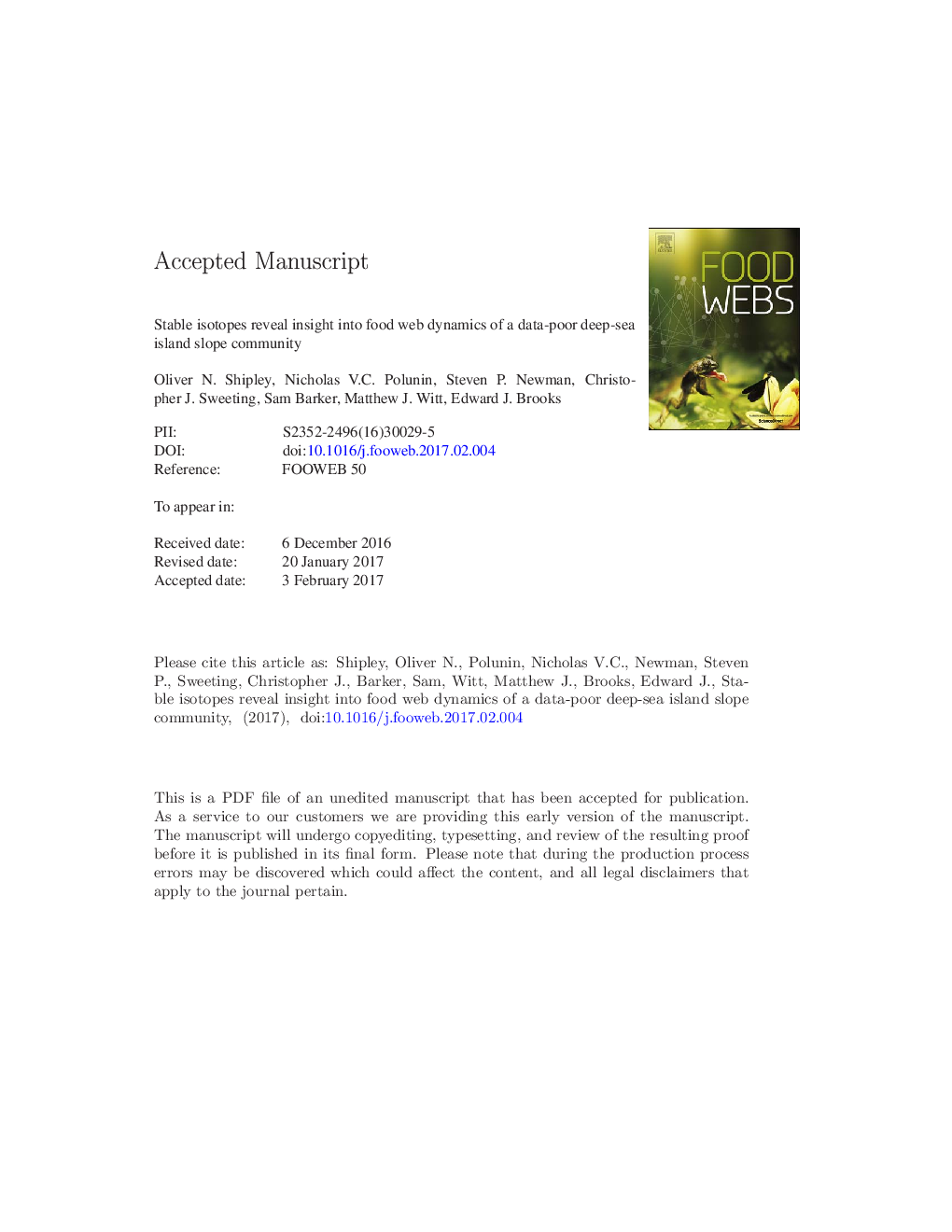| Article ID | Journal | Published Year | Pages | File Type |
|---|---|---|---|---|
| 5759840 | Food Webs | 2017 | 12 Pages |
Abstract
Deep-sea communities are subject to a growing number of extrinsic pressures, which threaten their structure and function. Here we use carbon and nitrogen stable isotopes to provide new insights into the community structure of a data-poor deep-sea island slope system, the Exuma Sound, the Bahamas. A total of 78 individuals from 16 species were captured between 462 m and 923 m depth, and exhibited a broad range of δ13C (9.45â°) and δ15N (6.94â°). At the individual-level, δ13C decreased strongly with depth, indicative of shifting production sources, as well as potential shifts in community composition, and species-specific feeding strategies. δ15N did not follow strong depth relationships, suggesting trophic level and depth are not tightly coupled across individuals. We observed ontogenetic enrichment in δ13C and δ15N for Squalus cubensis (Cuban dogfish) highlighting a shift to larger, higher trophic level prey through ontogeny. These data provide the first assessment of food-web structure in the Exuma Sound, and suggest inherent complexity associated with deep-sea island slope ecosystems. Such observations are needed to further our understanding and develop contemporary management plans for these systems.
Related Topics
Life Sciences
Agricultural and Biological Sciences
Agricultural and Biological Sciences (General)
Authors
Oliver N. Shipley, Nicholas V.C. Polunin, Steven P. Newman, Christopher J. Sweeting, Sam Barker, Matthew J. Witt, Edward J. Brooks,
